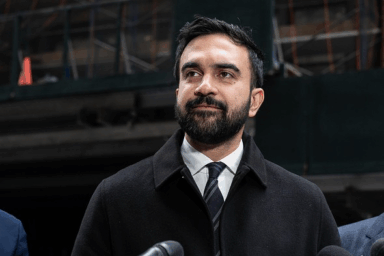The New York Times lead story describes how a series of private equity firms managed to repeatedly flip the venerable Simmons mattress company, earning themselves huge profits while the company became increasingly mired in debt and ultimately forced into bankruptcy and massive layoffs, with ordinary investors, employees, and company retirees taking a huge hit.
I thought it would be worthwhile to have a further look at some of the players cited briefly in the article, so here is a bit more on the private equity kingpin Thomas H. Lee, typical of the masters of the universe who so affect our lives yet generally fly below the radar.
First, the Times “nut graph”:
Simmons says it will soon file for bankruptcy protection, as part of an agreement by its current owners to sell the company — the seventh time it has been sold in a little more than two decades — all after being owned for short periods by a parade of different investment groups, known as private equity firms, which try to buy undervalued companies, mostly with borrowed money. For many of the company’s investors, the sale will be a disaster. Its bondholders alone stand to lose more than $575 million. The company’s downfall has also devastated employees like Noble Rogers, who worked for 22 years at Simmons, most of that time at a factory outside Atlanta. He is one of 1,000 employees — more than one-quarter of the work force — laid off last year. But Thomas H. Lee Partners of Boston has not only escaped unscathed, it has made a profit. The investment firm, which bought Simmons in 2003, has pocketed around $77 million in profit, even as the company’s fortunes have declined. THL collected hundreds of millions of dollars from the company in the form of special dividends. It also paid itself millions more in fees, first for buying the company, then for helping run it. Last year, the firm even gave itself a small raise.
Here’s what Forbes had to say about Mr. Lee ( who was involved with acquiring Simmons but left his own firm prior to the unraveling), listed as #717 on its 2007 roster of “The World’s Billionaires”:
Fortune: self made
Source: leveraged buyouts
Net Worth: $1.4 bil
Marital Status: married, 5 children
Education: Harvard University, Master of Business Administration
Soft-spoken buyout titan had a tough fall in 2005: After taking Warner Music public with Edgar Bronfman Jr., flipped commodities outfit Refco. Refco quickly fell apart; then-chief executive Phillip Bennett charged with securities fraud, conspiracy. Company’s assets bought up by London hedge fund Man Group. Lee claims he personally lost only $2 million. Harvard grad started investing with $150,000 inheritance 1974. Greatest hit: Snapple, bought for $135 million 1992, sold to Quaker Oats for $1.7 billion in 1994. Today invested in Dunkin’ Donuts, Michael Foods. Left Thomas H. Lee Partners to start Thomas H. Lee Equity Partners last March; believed to have been forced out by partners, he says he wants a fresh start. Now leveraging connections with hedge fund managers with his Blue Star fund-of-funds outfit.
How are people like Lee able to turn a $150,000 inheritance into $1.4 billion? Some of it is smarts, and hard work, and good information. But if the practices themselves might otherwise face the wrath of the people’s representatives, it helps to have them on your side. Proving that the GOP is hardly the sole party of the moneyed, Lee’s donations over the years seem to have been almost exclusively to Democrats—including many senators and House members. Among his most recent contributions are between $100,001 and $250,000 to the William J. Clinton Foundation, $28,500 to the Democratic Senatorial Campaign Committee, and the maximum of $4,600 to the Obama Victory Fund.
Though comparatively small sums for a wealthy man, they buy an awful lot of good will. So, too, does anything else that improves one’s odor and influence. Lee, for example, sits on many civic and charitable boards, among them Lincoln Center for the Performing Arts, The Museum of Modern Art, NYU Medical Center, The Rockefeller University and Whitney Museum of American Art, and the Executive Committee for Harvard University’s Committee on University Resources. The Times article mentions the sense of betrayal felt by a longtime Simmons employee who has been laid off after 22 years, with two months’ severance. But how often do we get a detailed look at the folks whose actions cause the pain? Very seldom indeed.


